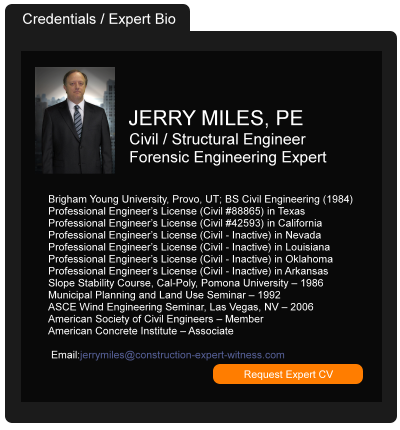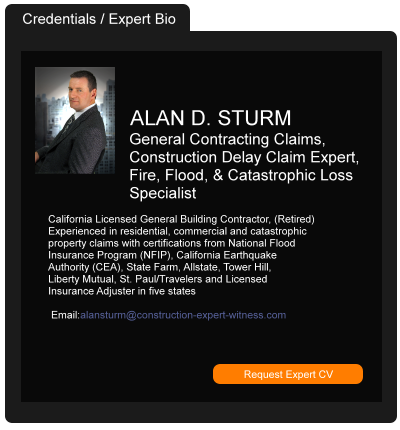Attorneys' Fee Clauses are Engraved Invitations to Sue
April 19, 2021 —
David M. McLain – Colorado Construction LitigationAs we start another trip around the sun, hopefully you are in the process of updating your form contracts, including purchase and sale agreements and express written warranties. Because the law and litigation landscape continually changes, it is a good practice to periodically update the forms you use in order to give yourself a fighting chance if and when the plaintiffs' attorneys come knocking on your door. As you engage in this process, I hope that you will take a critical look at whether your contracts include a prevailing party attorneys' fees clause and, if so, whether you should leave it in there.
In Colorado, parties are entitled to recover attorneys' fees only if provided for by statute or by contract. Historically, plaintiffs' attorneys relied on two statutes, the Colorado Consumer Protection Act and Colorado's Statutory Interest statute, to recover attorneys’ fees in construction defect cases. In 2003, the Colorado legislature capped treble damages and attorneys' fees under the Colorado Consumer Protection Act at $250,000, effectively restricting plaintiffs' attorneys from relying on the CCPA to recoup their attorneys' fees, especially in large cases. In 2008, the Colorado Supreme Court issued its decision in Goodyear v. Holmes, stating that plaintiffs can only claim prejudgment interest under Colorado's Statutory Interest statute, in cases where they have already spent money on repairs, not when they are suing for an estimate of what repairs will cost in the future. Without either the CCPA or the prejudgment interest statute to recover attorneys' fees, plaintiffs' attorneys most often now rely on the prevailing party attorney fee clause in contracts between the owner and builder, or in the declaration of covenants, conditions and restrictions in situations where a claim is prosecuted by an HOA.
Read the court decisionRead the full story...Reprinted courtesy of
David McLain, Higgins, Hopkins, McLain & RoswellMr. McLain may be contacted at
mclain@hhmrlaw.com
PATH Station Designed by Architect Known for Beautiful Structures, Defects, and Cost Overruns
October 01, 2013 —
CDJ STAFFThe new PATH station at the World Trade Center site in New York is six years behind schedule and its cost has doubled to $4 billion dollars. But maybe New Yorkers shouldn’t be surprised. The New York Times reports that the Port Authority, which operates the PATH trains between New York and New Jersey, hired Santiago Calatrava, an architect whose work has frequently lead to cost overruns and claims of defects.
The problems in lower Manhattan are not all Mr. Calatrava’s fault. Auditors described the Port Authority as “a challenged and dysfunctional organization.” (A separate report in the New York Times notes that a former PATH executive may have walked away with the rights to the words “World Trade Center” for $10. The company he subsequently founded, The World Trade Center Association, charges millions for the use of the name.)
One problem with Mr. Calatrava’s design for the station is that he insisted that all the mechanical elements of the station be located in other buildings. Further, the Port Authority might want to examine those plans carefully. In the design for a museum in Valencia, Spain, Mr. Calatrava forgot to provide for handicap access or fire escapes. That project, according to the Times tripled in cost as it was built.
Read the court decisionRead the full story...Reprinted courtesy of
Boilerplate Contract Language on Permits could cause Problems for Contractors
March 19, 2014 —
Beverley BevenFlorez-CDJ STAFFCraig Martin on his blog Construction Contractor Advisor discusses the potential problems for a contractor that a “boilerplate contract” could cause: “A recent case revealed the problems a contractor had with permits when the contractor’s estimate contemplated an easy permitting process and compliance, but in actuality it was much, much more difficult.”
Martin cites the case Bell/Heery v. United States, where a contractor discovered that the permit process would be much more time-consuming and expensive than originally planned. When Bell/Heery asked for additional funds to cover the additional costs, the “contracting officer rejected the request, finding that Bell/Heery had assumed the risk of the permitting process and it was liable for any costs associated with the permitting process and construction methods required by the permitting process.”
“Bell/Heery appealed to the Court of Claims,” but lost the battle. The contractor had to absorb $7 million in costs to comply with the required permits.
Read the court decisionRead the full story...Reprinted courtesy of
Kaylin Jolivette Named LADC's Construction and Commercial Practice Chair
October 09, 2023 —
Kaylin Jolivette - Lewis BrisboisLafayette, La. (August 15, 2023) – Lafayette Associate Kaylin E. Jolivette was recently named Practice Chair of the Louisiana Association of Defense Counsel (LADC) Construction and Commercial practice.
LADC is comprised of over 1,400 attorneys in Louisiana who are engaged in the defense of civil litigation. The organization creates CLE programs tailored to individual practices throughout the year to provide members with the knowledge and skills to be among the top litigators in the region.
Ms. Jolivette is a member of the General Liability Practice. Her past experience includes practice in an array of civil litigation matters as both plaintiff and defense counsel from the pre-trial litigation phases, to trial and appeals, in various areas including products liability, privacy law, health care law, energy litigation, contractual disputes, personal injury, alternate dispute resolution, and construction litigation.
Read the court decisionRead the full story...Reprinted courtesy of
Kaylin Jolivette, Lewis BrisboisMs. Jolivette may be contacted at
Kaylin.Jolivette@lewisbrisbois.com
Supreme Court of Wisconsin Applies Pro Rata Allocation Based on Policy Limits to Co-Insurance Dispute
February 18, 2019 —
Brian Margolies - TLSS Insurance Law BlogIn its recent decision in Steadfast Insurance Company v. Greenwich Insurance Company, 2019 WL 323702 (Wis. Jan. 25, 2019), the Supreme Court of Wisconsin addressed the issue of contribution rights as among co-insurers.
Steadfast and Greenwich issued pollution liability policies to different entities that performed sewer-related services for the Milwaukee Metropolitan Sewerage District (MMSD) at different times. MMSD sought coverage under both policies in connection with underlying claims involving pollution-related loss. Both insurers agreed that MMSD qualified as an additional insured under their respective policies, but Greenwich took the position that its coverage was excess over the coverage afforded under the Steadfast policy, at least for defense purposes, and that as such, it had no defense obligation.
Read the court decisionRead the full story...Reprinted courtesy of
Brian Margolies, Traub LiebermanMr. Margolies may be contacted at
bmargolies@tlsslaw.com
Damages in First Trial Establishing Liability of Tortfeasor Binding in Bad Faith Trial Against Insurer
October 22, 2014 —
Tred R. Eyerly – Insurance Law HawaiiThe court considered whether, in a second trial for bad faith, the insured was required to again prove her damages, instead of relying on the jury's damage determination in the first trial where the tortfeasor's liability was established. Geico Gen. Ins. Co. v. Paton, 2014 Fla. Ct. App. LEXIS 14362 (Fla. Ct. App. Sept. 17, 2014).
The insured was injured in a car accident caused by the negligence of the underinsured driver. Geico paid the insured the $10,000 policy limit under her policy. The insured's mother also had uninsured/underinsured coverage with Geico, with policy limits of $100,000. When the insured demanded the $100,000 policy limits from her mother's policy, Geico offered $1,000. Later, Geico offered $5,000, but returned to the $1,000 offer after the insured refused to settle. When the insured reduced her demand to $22,500, Geico did not respond.
The insured sued and the case went to trial. The jury awarded $10,000 for past pain and suffering, and $350,000 for future pain and suffering. The verdict set the insured's total damages at $469,247. Geico did not file a motion for new trial nor did it appeal. Judgment was entered in favor of the insured, but was limited to the $100,000 UM policy limits.
Read the court decisionRead the full story...Reprinted courtesy of
Tred R. Eyerly, Insurance Law HawaiiMr. Eyerly may be contacted at
te@hawaiilawyer.com
Erasing Any Doubt: Arizona FED Actions Do Not Accrue Until Formal Demand for Possession is Tendered
July 13, 2017 —
Bob Henry - Snell & Wilmer Real Estate Litigation BlogClearing up any lingering confusion, in Carrington Mortgage Services, LLC v. Woods, 767 Ariz. Adv. Rep. 4 (June 22, 2017), the Arizona Court of Appeals confirmed that residential forcible entry and detainer actions in Arizona accrue for statute of limitations purposes when a party entitled to possession makes a formal demand for return of possession not when the party could have made a demand for return of possession.
In Carrington, the borrowers (the Woodses) remained in property that they had acquired in 2008 but then lost to foreclosure several years later. The original lender obtained title to the property at a trustee’s sale on February 16, 2010, but did not take any action to remove the Woodses at that time. Title to the property was then transferred through a series of transactions over the next six years. Ultimately, Carrington acquired the title and, in 2016, sent a formal “Notice to Vacate” the premises to the Woodses. After the Woodses failed to timely vacate pursuant to the demand, Carrington initiated an FED action to evict them from the property.
Read the court decisionRead the full story...Reprinted courtesy of
Bob Henry, Snell & WilmerMr. Henry may be contacted at
bhenry@swlaw.com
EEOC Builds on Best Practice Guidance Regarding Harassment Within the Construction Industry
August 12, 2024 —
Abby M. Warren & Christohper A. Costain - Construction Law ZoneIn June 2024, the Equal Employment Opportunity Commission (EEOC) issued
guidance tailored to the construction industry concerning harassment in the workplace or at the jobsite. The guidance is important for construction industry leaders and employers to understand how to prevent and remedy harassment in the workplace — more than a third of all EEOC discrimination charges filed between 2019 and 2023 asserted harassment. The guidance represents the EEOC’s latest effort in executing its Strategic Enforcement Plan for Fiscal Years 2024 to 2028, which, in part, focuses on combatting systemic harassment and eliminating barriers in recruitment and hiring, particularly for underrepresented groups in certain industries, including women in construction, through the EEOC’s enforcement efforts. In this article, we highlight key principles and practices from this guidance
Leadership and Accountability
The guidance reiterates that consistent and demonstrated leadership is critical to creating and maintaining a workplace culture where harassment is unacceptable and strictly prohibited. Worksite leaders, including project owners, crew supervisors, and union stewards, are each expected to regularly communicate that harassment is intolerable through several suggested efforts.
Reprinted courtesy of
Abby M. Warren, Robinson+Cole and
Christohper A. Costain, Robinson+Cole
Ms. Warren may be contacted at awarren@rc.com
Mr. Costain may be contacted at ccostain@rc.com
Read the court decisionRead the full story...Reprinted courtesy of


































































